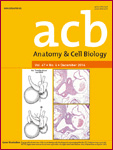
Anatomy & Cell Biology
Scope & Guideline
Unveiling the Secrets of Structure and Function
Introduction
Aims and Scopes
- Anatomical Variations and Clinical Implications:
The journal emphasizes research on anatomical variations across different populations and their clinical significance, which is crucial for surgical procedures and diagnostics. - Morphological and Histological Studies:
A core area of focus is the morphological and histological analysis of various tissues and organs, contributing to a deeper understanding of their structure and function. - Innovative Imaging Techniques:
The journal frequently publishes studies utilizing advanced imaging techniques like computed tomography, magnetic resonance imaging, and micro-computed tomography, which enhance the understanding of anatomical structures. - Embryological and Developmental Anatomy:
Research on embryological development and anatomical changes over time is a key focus, providing insights into congenital anomalies and their implications. - Interdisciplinary Approaches:
The journal welcomes interdisciplinary research that combines anatomy with other fields like physiology, pathology, and biomedical engineering, reflecting the interconnected nature of these disciplines.
Trending and Emerging
- Integration of Molecular Biology and Genetics:
There is a growing trend towards exploring the molecular and genetic underpinnings of anatomical structures, which enhances the understanding of development, function, and pathology. - Application of Artificial Intelligence in Anatomy:
The use of artificial intelligence and machine learning techniques in analyzing anatomical data, particularly in imaging, is on the rise, offering new avenues for research and diagnostics. - Focus on Regenerative Medicine and Stem Cell Research:
Studies exploring the role of stem cells in regenerative medicine and their anatomical implications are increasingly prominent, reflecting a broader interest in therapeutic applications. - Patient-Specific Anatomical Studies:
Research that emphasizes personalized or patient-specific anatomy, particularly in surgical planning and intervention, is gaining traction, highlighting the importance of tailored approaches in clinical practice. - Interventional and Surgical Anatomy:
There is a notable increase in publications related to surgical anatomy and interventions, which are crucial for improving surgical outcomes and techniques.
Declining or Waning
- Traditional Anatomical Studies:
There is a noticeable decline in purely descriptive anatomical studies that do not incorporate modern methodologies or clinical relevance, as the field evolves towards more applied and translational research. - Basic Histological Techniques:
Research relying solely on basic histological techniques without integrating advanced imaging or molecular biology has become less prominent, as the field increasingly favors studies that incorporate cutting-edge technologies. - Forensic Anatomy:
Although forensic-related studies have contributed valuable insights in the past, there has been a reduction in the number of publications focusing solely on forensic anatomy, possibly due to the increasing complexity and interdisciplinary nature of this field.
Similar Journals
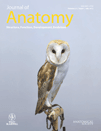
JOURNAL OF ANATOMY
Your Gateway to Cutting-Edge Anatomical DiscoveriesThe JOURNAL OF ANATOMY, published by Wiley, is a premier international journal dedicated to advancing the field of anatomy and its related disciplines. With the ISSN 0021-8782 and E-ISSN 1469-7580, this esteemed journal has been at the forefront of anatomical research since its inception in 1945. Renowned for its rigorous peer-review process, the journal has earned a prestigious impact factor reflecting its high standard of scholarly work. This includes a 2023 Quartile ranking of Q1 in Anatomy, underscoring its prominence among top-tier publications. The journal’s diverse scope encompasses key fields such as cell biology, developmental biology, and molecular biology, making it an essential resource for researchers and practitioners alike. Publishing cutting-edge research and reviews, the JOURNAL OF ANATOMY aims to foster innovative scientific discourse and exploration within the anatomical sciences, solidifying its role as a vital hub for the global anatomical community.

HOMO-JOURNAL OF COMPARATIVE HUMAN BIOLOGY
Connecting Disciplines Through Human Biology ResearchHOMO - Journal of Comparative Human Biology is a prestigious academic journal dedicated to advancing the field of comparative human biology, offering a platform for researchers, professionals, and students to disseminate cutting-edge findings. Published by E Schweizerbart'sche Verlagsbuchhandlung in Germany, this journal has been a crucial resource since its inception in 1950, featuring a rich archive of studies until 2023. It holds a Q3 quartile ranking in Anthropology and a Q4 quartile ranking in Miscellaneous Medicine, reflecting its significance and influence within the academic community. Although not an Open Access journal, it provides a wealth of robust research that intersects with various disciplines within the anthropological sciences. Researchers looking for a wide array of comparative studies and insights into human biology will find HOMO an invaluable addition to their scholarly resources.

Romanian Journal of Morphology and Embryology
Fostering Knowledge in Morphology and BeyondRomanian Journal of Morphology and Embryology is a distinguished publication in the fields of Cell Biology, Developmental Biology, Embryology, and Pathology, published by EDITURA ACAD ROMANE. Established in 1991 and continuously evolving, this journal serves as a vital platform for disseminating research and advancements related to morphology and embryological studies. With an impressive range of quartile rankings in 2023, including Q3 in Embryology and Pathology, it reflects its growing significance and influence within the academic community. Although currently not open access, the journal provides crucial insights and findings valuable to researchers, practitioners, and students dedicated to enhancing their knowledge and exploring new innovations in the life sciences. The journal’s commitment to high-quality research further cements its role as a key resource for those involved in the intricate study of biological form and function.
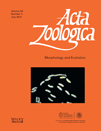
ACTA ZOOLOGICA
Championing Innovative Discoveries in ZoologyACTA ZOOLOGICA, published by WILEY, is a distinguished journal that serves as an essential resource for researchers and professionals in the fields of Animal Science, Zoology, Cell Biology, and Ecology. With its ISSN 0001-7272 and E-ISSN 1463-6395, this journal has been contributing to the scientific community since 1920 and continues to explore new dimensions in zoological research. As of 2023, it holds an impactful position with a Q3 ranking in Animal Science and Zoology as well as Ecology, Evolution, Behavior and Systematics, signifying its relevance and emerging influence in these domains. Although it is not an Open Access journal, ACTA ZOOLOGICA remains committed to disseminating high-quality research and facilitating scholarly discussions among its audience. The journal aims to publish original articles, reviews, and critical findings that enhance understanding of animal biology and conservation, addressing global ecological challenges. Its rankings in Scopus further underscore its scholarly reputation, making it a valuable addition to the libraries of institutions and individuals alike.
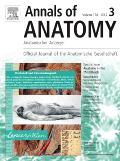
ANNALS OF ANATOMY-ANATOMISCHER ANZEIGER
Bridging Disciplines in Anatomy and BiologyANNALS OF ANATOMY - ANATOMISCHER ANZEIGER is a premier journal published by Elsevier GmbH, focusing on the intricacies of anatomical research and developmental biology. Established in 1992, this journal has continuously contributed to the advancement of knowledge in these fields, boasting an impressive impact factor that positions it within the Q2 quartile for Anatomy and a respectable ranking in Developmental Biology. With a Scopus ranking of #17 in Anatomy and #45 in Developmental Biology, ANNALS OF ANATOMY stands as a critical resource for researchers, professionals, and students alike, fostering scholarly dialogue and innovation. While currently not an open-access journal, its comprehensive scope and rigorous peer-review process ensure that the research published is of the highest quality. Based in Germany, this journal addresses a diverse range of topics and remains an essential platform for disseminating significant findings in the anatomical sciences and their interconnections with other biological fields.
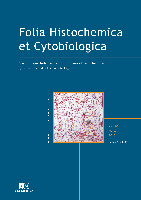
FOLIA HISTOCHEMICA ET CYTOBIOLOGICA
Pioneering Research in Histochemistry and PathologyFOLIA HISTOCHEMICA ET CYTOBIOLOGICA, an esteemed journal published by VIA MEDICA, serves as a vital platform for researchers and professionals in the fields of histology, pathology, and cytobiology. With an ISSN of 0239-8508 and E-ISSN of 1897-5631, this Open Access journal has been disseminating significant findings since 1984, offering free access to a broad audience of scientists and academics. Based in Poland, this journal focuses on critical advancements in the study of cellular structures and functions, contributing substantially to the understanding of various diseases and biological processes. The journal currently holds a respectable impact factor, ranking in the Q3 category for Histology and miscellaneous Medicine, and Q2 for Pathology and Forensic Medicine as per the 2023 metrics. With its commitment to quality research and an inclusive publishing approach, FOLIA HISTOCHEMICA ET CYTOBIOLOGICA is poised to continue influencing its fields significantly through 2024 and beyond.

ZOOMORPHOLOGY
Charting the evolutionary pathways of the animal kingdom.ZOOMORPHOLOGY, published by SPRINGER, stands as a pivotal journal in the fields of Animal Science, Zoology, and Developmental Biology. Since its inception in 1980, this journal has been dedicated to advancing the understanding of animal morphology and the evolutionary adaptations of various species. With an ISSN of 0720-213X and an E-ISSN of 1432-234X, ZOOMORPHOLOGY boasts a Q2 ranking in Animal Science and Zoology and is recognized within the Q4 category in Developmental Biology as of 2023, reflecting its impactful contributions to the scientific community. The journal is indexed in Scopus, where it ranks #224 out of 490 in Animal Science and Zoology, and #66 out of 82 in Developmental Biology, positioning it as a resource of considerable significance for researchers and professionals in these disciplines. Although ZOOMORPHOLOGY currently operates on a traditional access model, it continues to foster scholarly communication and inspire future researchers through rigorous peer-reviewed articles that explore the intricate relationships between form and function in the animal kingdom. With a commitment to excellence and innovation, ZOOMORPHOLOGY remains a vital platform for publishing high-quality research that drives forward our knowledge in morphology and evolutionary biology.
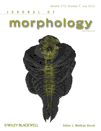
JOURNAL OF MORPHOLOGY
Connecting Disciplines Through Morphological ResearchEstablished in 1887, the Journal of Morphology is a pioneering publication in the field of morphology, specializing in the anatomical and developmental biology of diverse organisms. Published by Wiley, this journal features high-quality research that spans multiple disciplines, including animal science and zoology, with a current ranking of Q2 in these areas. Although it lacks an open-access option, the journal is committed to advancing knowledge and facilitating scientific communication among professionals in developmental biology, as indicated by its ongoing contributions since its convergence years and up to 2024. With an impact factor that reflects its importance in the scientific community, the Journal of Morphology is a vital resource for researchers, professionals, and students seeking to understand complex morphological processes and their implications in modern science. Its dedication to publishing rigorous, peer-reviewed articles makes it an indispensable asset in the exploration of life's intricacies.
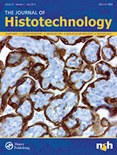
JOURNAL OF HISTOTECHNOLOGY
Transforming tissue science into impactful health solutions.JOURNAL OF HISTOTECHNOLOGY, published by Taylor & Francis Ltd, is a leading academic journal dedicated to advancing the field of histotechnology, which plays a crucial role in both clinical and research settings. With an established history since 1977, this journal serves as a critical platform for researchers, professionals, and students engaged in the intricate study of tissue processing, staining techniques, and microscopic analysis. It is currently indexed in reputable databases, reflecting its commitment to scientific rigor, with a notable presence in categories such as Anatomy, Histology, and Medical Laboratory Technology. Despite its open access status being limited, the Journal of Histotechnology maintains a respectable impact factor and ranks within the third quartile for Anatomy and Medical Laboratory Technology, and fourth quartile for Histology in 2023, emphasizing its relevance in the scholarly community. As the field continues to evolve, this journal aims to foster innovation and dissemination of knowledge within histotechnology, making it an essential resource for those looking to further their expertise and contribute to the advancements in this vital area of health sciences.

FOLIA MORPHOLOGICA
Championing Rigorous Science in Morphological StudiesFOLIA MORPHOLOGICA is a prominent academic journal dedicated to advancing the fields of anatomy and histology. Published by VIA MEDICA since 1952, this journal serves as a critical platform for the dissemination of high-quality research, offering valuable insights into morphological studies. With an impact factor reflective of its dedication to rigorous scientific evaluation, FOLIA MORPHOLOGICA is recognized within the Q3 category in both anatomy and histology as of 2023, indicating its substantial contribution to these vital areas of medical science. Although currently not an open-access journal, it provides essential access options through various academic databases, ensuring that important findings are reachable by researchers, healthcare professionals, and students globally. The journal's scope encompasses a wide range of topics related to morphological sciences, making it a vital resource for those looking to stay at the forefront of anatomical and histological research. FOLIA MORPHOLOGICA remains dedicated to fostering scholarly communication and innovation, continuously aiming to enhance the scientific understanding of the intricate structures that underpin biological functions.